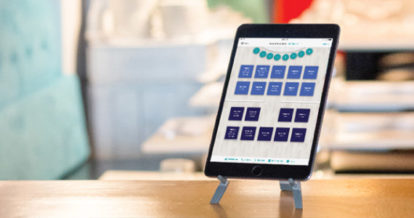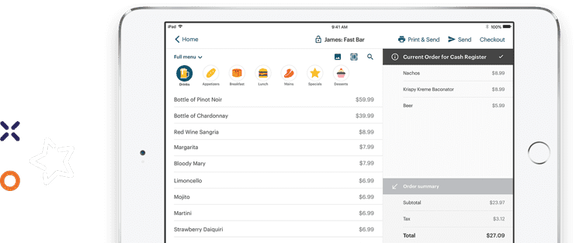Most people hear the term restaurant point of sale (POS) and think of a cash register for customer transactions. Punch in an order, take a payment, wave goodbye. But these days, a restaurant POS is a lot more than that: it can help you increase your sales, improve guest experience, and help you make better decisions about your business.
A POS used in restaurants doesn’t just facilitate day-to-day operations, but also promotes long-term growth. Restaurant POS systems are designed to scale with your restaurant with relevant add-on solutions, such as reservations and online ordering, that can help your business grow and adapt to changing circumstances.
What Is a Restaurant POS?
A restaurant POS, or point of sale, is a system of hardware and software that work together to handle workflow and transactions. POS systems are used in food and beverage businesses, as well as other types of businesses like retail, so it’s important to buy a system designed specifically for your operation. These systems are used in food and beverage businesses, as well as other types of businesses like retail, so it’s important to buy or switch to a POS system designed specifically for your operation.
In the case of retail POS software, all the products are tied to the inventory with numbers (barcodes), which is what the cashier inputs into the system. After the order is input, retail POS software is designed to complete and close the transaction immediately. In other words, the software is primarily designed to complete sales. For this reason, most retail POS terminals are stationary and cannot be moved throughout the store.
However, restaurants operate a little differently. In the case of a restaurant, a staff member uses a POS to input a customer’s order, and that information is immediately relayed to the kitchen. Depending on the type of restaurant, the order may then be closed immediately or remain open until the end of the meal or service. As a result, most restaurant POS systems feature portable tablets, such as a restaurant iPad, which can be carried around the venue to facilitate tableside ordering.
But a modern restaurant POS is capable of so much more than taking orders. Venues from food trucks to fast food joints to fine dining restaurants now use their restaurant POS as the main operations hub for their business.
A modern restaurant POS can help your business thrive in three main ways:
- Increase your sales
- Improve your guest experience
- Inform your business decisions
Many of the specific benefits within these categories are interconnected. Make more informed business decisions, and your service will likely improve. Improve your service, and your sales will see a boost as well – a happy domino effect that makes running a better business that much easier.
But it’s time to get specific. Here are 33 things a restaurant POS can do for your venue.
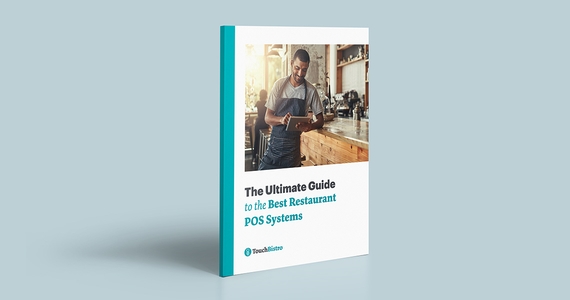
Compare the top restaurant POS systems on features, pricing, payments, and more.
A Restaurant POS Increases Your Sales
1. Speed up every transaction
Unlike a legacy POS system, which is stationary, a modern POS is fully mobile and designed to help you serve more customers in less time. A modern restaurant POS can remove certain steps of the front-of-house workflow and help increase the speed of each transaction. And the more customers you serve, the more money you make.
For quick service restaurants, a modern restaurant POS can simplify the transaction process for your staff, which can help them move through lines much more quickly. Plus, with a mobile POS used in restaurants, you can have one cashier work through a long line to take advance orders that the kitchen or baristas can get started on, while the other cashier processes payment.
For full service restaurants a mobile POS enables your servers to take tableside orders. Tableside ordering is a big deal, because all your servers need to do is punch in the order once at the table instead of writing it down and running to a POS – which eliminates errors and speeds up service. A server’s product knowledge is more consistent because they can carry it around with them – no more running back to the kitchen with questions about ingredients or allergy alerts. It’s all right there.
Some restaurants have seen sales increases of 20% or more after implementing tableside ordering.
2. Optimize menu prices
A restaurant POS can break down food cost percentages and contribution margins by day and by menu item. When you know how much a menu item is costing you to make, you can spot opportunities to optimize your menu prices.
For example, if you find that the food cost percentage of your signature latte is higher than the industry standard of 20%–40% (i.e. the cost to make that latte is too close to the price a customer pays), you know the time has come to raise the price tag.
And once you do decide to raise prices, a restaurant POS will also let you update your menu instantly from anywhere at anytime.
3. Trigger a push of your most profitable menu items
Your restaurant POS can also tell you which menu items are top sellers and which items are the most profitable (hint: they’re not always the same thing!).
For example, you might think the seafood pasta is your best dish because it sends customers back to compliment the chef. But what do the numbers show you about how many are sold in a day? What about the total cost to make each dish?
Your restaurant POS could reveal that while this pasta dish sells well, it doesn’t do much for your profit because it’s expensive to produce, with a higher food cost percentage than every other item on your menu.
Instead, through your POS report, you could see that the margherita pizza is actually your most profitable menu item, even though it’s not a top seller. Promotions and recommendations from servers can easily boost the number of these pizzas sold, which could increase your sales of a highly profitable item.
4. Inform a menu redesign to make more profit
Use POS data to optimize your menu design and influence customer spending.
Once you’ve identified high-margin items using your POS reports, you can place these items strategically on your menu in an area called the Golden Triangle.
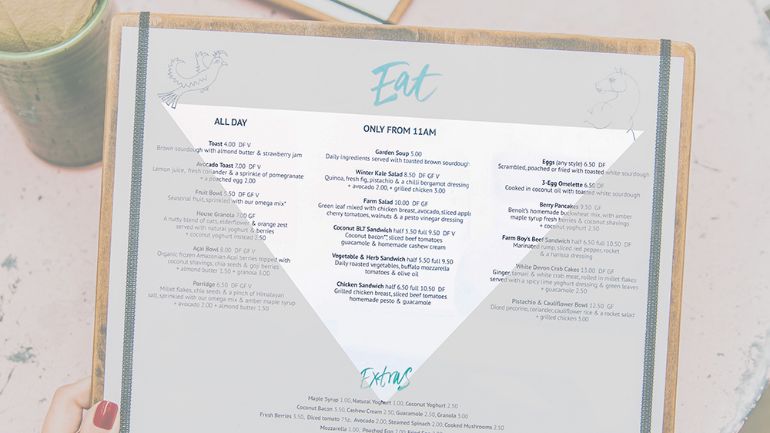
The Golden Triangle is the area of your menu that customers read first, making them more likely to order items located here. You’ll want to display high-margin items in your Golden Triangle, which will help increase the sale of dishes that give your bottom line the biggest boost.
5. Increase upselling automatically
Don’t rely on your staff to remember to upsell. Automatically prompt your front-of-house staff to upsell with your POS.
When you use a modern restaurant POS, you can customize upsell prompts on any and all orders. Say a customer wants to order a Bloody Mary from the bar. The bartender punches in the order and before they hit send, they see a pop-up modifier with an option to upsell. Want to make that a double? What about a premium vodka?
Upsell prompts make training new staff easier – since it’s built right into the system – and help servers provide a consistent level of service to customers.
Small upsells can really add to your bottom line over time, and automating the process can increase your average check size quickly.
6. Decrease employee theft
Make sure that any inventory headed out the door has been paid for by customers – not by you, unknowingly.
Employee theft in restaurants is a real threat: 75% to 85% of all restaurant theft is committed by employees, and theft can account for up to 4% of restaurant sales. Shrinkage – liquor lost due to spill or waste – can account for about 25% of alcohol sales.
A restaurant POS can help combat employee theft – leading to an increase in actual sales – in a few different ways. First and foremost, a POS ensures that all ordered items are tracked. To get a BLT from the kitchen with extra bacon, for example, the server has to enter it into the POS.
Second, a POS has security settings that restrict what a staff member can do within the system, based on their position. For example, a front-of-house employee might be unable to void an item, alter a bill, or comp a birthday dessert without involving a manager, which cuts down on the freebies given to friends or to boost tips.
Third, a restaurant POS can track your inventory, ensuring your sales report matches your inventory report. Your POS can also have integrations that use a combination of hardware and software to track alcohol pours (beer, liquor) and help you cut down on shrinkage costs.
7. Boost customer retention
Create a loyalty program that rewards repeat customers and encourages them to keep coming back – and to bring their friends!
This is about more than a simple punch card that customers might lose or copy or just plain not want to carry. With a restaurant POS, your loyalty program is integrated right into the system, tracking customer interactions and creating a customer database you can use in other ways. For instance, programs like TouchBistro Loyalty allow you to offer personalized rewards based on guest spend, items purchased, or subscriptions.
8. Create targeted marketing campaigns
Use the customer database collected through your POS loyalty program to target marketing campaigns for individual customer preferences.
Customized marketing campaigns are incredibly popular right now, and many customers now expect a unique offers tailored to their needs. A restaurant POS can use your loyalty program to collect customer data and trends, which you can use to create targeted campaigns that better incentivize customers to return and spread the word about your venue.
9. Manage your floor in real time
Use floor plan and table management to quickly find out how much is being spent at each table and when guests were seated.
Hosts and managers may want to know, in real time, how long guests are taking to finish their meals, so they can keep service moving at a reasonable pace. If they see a table is lagging but spending a lot, it may be time for a server to upsell them on coffee. But if a table’s been seated for a while and they’re not spending much, it may be time for a subtle hint to pay the bill.
Floor plan and table management can also help hosts give more accurate wait-time estimates based on how long tables have been sitting for, which can go a long way for eager customers waiting for tables. And when you’re able to associate time and money to each table and each section, your managers and hosts are much better equipped to keep service moving in a way that will make you the most revenue.
10. Take online orders
Your restaurant POS can help you take online ordering directly, or streamline orders from takeout and delivery apps like Uber Eats, Grubhub, DoorDash, and more.
If your restaurant POS provider offers a commission-free direct online ordering system, like TouchBistro Online Ordering, you can give customers the option to order directly from your restaurant in real time. These orders are then directly streamlined into the POS so staff know exactly what orders to prepare and when.
Some restaurant POS systems also offer integrations with online ordering aggregators so you can see all the orders coming in from all your third-party food delivery services. This helps you streamline operations and reduces the amount of manual work needed to manage orders from multiple third-party apps – which ultimately reduces the risk of errors.
A Restaurant POS Improves Your Guest Experience
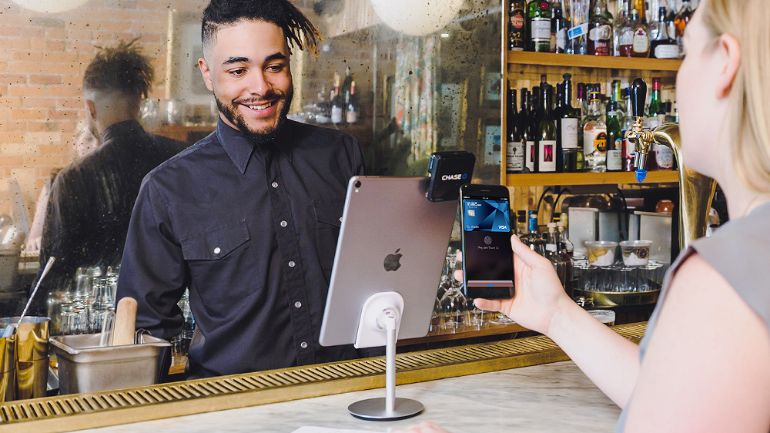
11. Accept mobile payments
Offer a faster, more secure way to pay the bill.
According to a study done by 451 Research, 44% of mobile customers routinely use a mobile app to make a restaurant purchase. Restaurants will need to keep up with this growing expectation, especially if they want to attract a new generation of diners.
With a mobile payment processing integration, you’ll be offering your customers an EMV-compliant mobile payment option for top-notch payment security and convenience.
12. Prevent credit card fraud
If you’re making a list of restaurant POS systems to choose from, focus on those that don’t store credit card information in their systems. POS companies that do not store information are considered more secure because they don’t handle or store any sensitive payment information.
Your POS can also connect you with payment processors (like Chase, Moneris, PayPal) that are EMV compliant, which means they have the technology to accept debit and credit cards with embedded microprocessors that store and protect the cardholder’s data. This helps guard customers against theft and you against fraudulent credit card chargebacks.
Some restaurant POS systems also offer integrated payments that provide security and a seamless experience for your guests, since they can order and pay all through the same system.
13. Track front-of-house staff performance
Know exactly how much your front-of-house staff are selling, how many voids they’re entering, and how long they’re taking with each customer or table.
Restaurant POS reports can give you the scoop on staff performance so you can identify where mistakes are being made and course correct when you need to. See where additional training from your managers or other outside services might be helpful for staff members who aren’t quite up to snuff.
On the flip side, your reports can also tell you who’s killing it so you know who to schedule when you’re at your busiest.
14. Reduce order errors
Nothing puts a damper on a customer’s restaurant experience than having their order come out wrong. These mistakes can cost you time, money, and customer retention.
With a modern restaurant POS, your servers can take tableside orders on a mobile device, which helps reduce errors by eliminating a step: scribbling down an order before running to punch it in. Plus, tableside orders let servers communicate menu changes (like an 86’d pasta of the day) or modifications (like how they want their steak cooked) right when they’re needed.
15. Improve communication between front and back of house
A system of clear, consistent communication helps avoid errors that slow down service and frustrate customers.
A restaurant POS can standardize how orders are communicated from front-of-house to back-of-house staff, organizing items on tickets and display systems so that they’re straightforward and easy to read. A POS can also communicate any modifiers or allergies that your kitchen needs to know before starting – without anyone needing to run to the back to explain a complicated order.
16. Set menu specials and promotions
Schedule specials and promotions that run until you indicate otherwise, to reduce human error and time-consuming manual adjustments.
Rather than making a customer wait while staff figure out how to subtract the early bird discount on their breakfast order or flag down a manager to apply a discount, program your restaurant POS to apply automatic discounts during specific times or on specific items.
Do you want to offer a special price for coffee after the morning rush between 9:30 and 11:00 am? What about discounting domestic draught beer before the evening rush between 3:00 and 6:00 pm? You can set all of these parameters right from your restaurant POS, creating smoother service with fewer errors.
17. Automatically 86 sold-out items
Prevent staff from inputting items that have already sold out, and save customers some serious time and disappointment.
A restaurant POS with ingredient and inventory tracking can keep your staff informed of what’s happening in the kitchen. You can set warning prompts to alert servers about low availability on certain menu items or when an item gets 86’d. That way, if customers try to order an 86’d item, your staff can tell them right away that the item isn’t available – instead of making them wait before they find out.
18. Split the bill without any pain
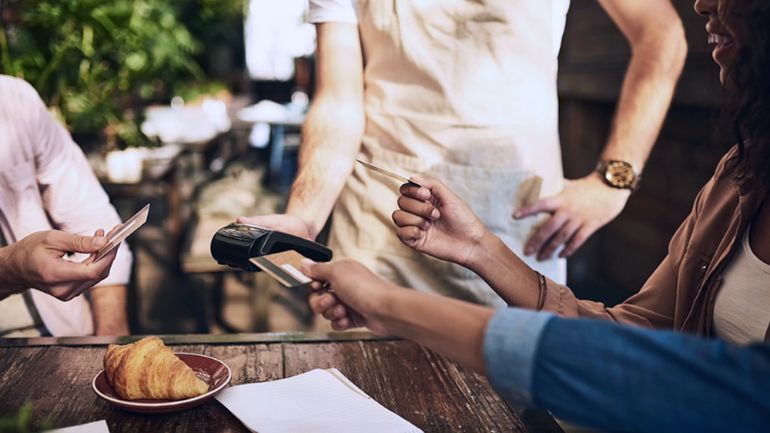
“Separate bills, please.” Servers dread this request when a table is leaving, and customers hate being asked about it up front. But a restaurant POS can divide and calculate separate checks in a way that’s not painful for your staff or for your customers. Because really, splitting checks should take only a few taps.
19. Split items between customers
To take bill splitting a step further, you’ll also want to make it simple to split items shared between guests.
Is table 12 sharing nachos between all four guests but a bottle of wine between only two? A restaurant POS should let you split one menu item between different checks so that each customer can pay for their portion.
20. Keep track of bar tabs
Manage customers at the bar who plan on staying for a few rounds and want to set up a bar tab.
A restaurant POS helps you keep track of which drink orders belong to which customer by storing select credit card details as a tab. When that customer is ready to cash out, a bartender can use the POS bar tab to locate the right credit card and process payment. Smooth and easy.
A modern iPad POS can also help you transfer bar tabs to a different table. Say a party wants to have a drink while they wait for a table to open up in the dining room. When that table is ready, your bartender can use the POS to transfer the tab over with just a few taps.
21. Email guest checks
Offer a paperless option with emailed guest checks, adding convenience for customers and a cost savings for you.
When a customer is cashing out, you can ask if they’d like their guest check printed or emailed. Customers love this option, since it means they don’t have to worry about losing itemized paper guest checks, which is especially handy for business meals that need to be expensed at the end of the month.
A Restaurant POS Informs Your Business Decisions
22. Run daily sales reports
Get a real-time view of what was sold, when it was sold, who sold it, and which method of payment was used.
Since your restaurant POS records every sale, it allows you to see extensive sales reports that give you a full look at how your venue performed that day. Like getting a daily health check from your doctor, you’ll always know if your business is in good shape or whether you should buckle down on improving your revenue.
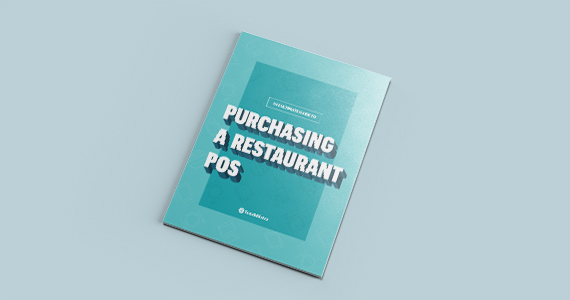
Get the guide that helps you evaluate different POS solutions and find the right one for your business.
23. Manage your labor costs
Leverage your restaurant POS data to make labor decisions that will help your venue better perform: improve service with more staff during busy times and save money with less staff during slow times.
By looking at POS reports, you can identify your busiest and slowest times on any given day. How many staff members do you need to keep a high level of service during the early morning rush? Can you push start times for Monday night servers to 6:00 instead of 5:00 pm when the dinner rush starts a bit later?
These reports can also show if you need to adjust hours of operations, which can help decrease labor costs. Why open at 8:00 am when your first sale doesn’t come until 10:00 am?
Your restaurant POS is the best tool to tell you when and where to make labor adjustments.
24. Make quick decisions on the go

Why wait until the end of a day to see what’s selling at your venue?
Through cloud reporting, you get remote access to real-time data on which menu items and menu categories are selling. If you need to make changes (price, promotions, ingredients), remote menu management lets you adjust what you need easily – even when you’re off site.
25. Identify trends in past performance
Spot underlying trends using historical data, and make decisions based on what’s worked for you in the past.
Your POS is a hub of information, collecting a wide variety of datasets that you can drill into and compare: month to month, year over year, or for special occasions like the Super Bowl or UFC fight nights.
26. Produce cost reports
A POS used in restaurants can help you break down your total costs to see what you spent on food, alcohol, and labor.
A restaurant POS helps you keep track of your costs over a customized time range. A food cost report, for example, can show you things like number of items sold, gross sales, gross costs, and what the cost represents as a percentage of the gross sales.
Use these cost reports to cross-reference with your sales reports, and analyze upcoming purchasing and staff scheduling decisions.
27. Track inventory
Manage your inventory right from your POS, so you always know when, what, and how much to order.
Modern POS systems designed specifically for restaurants let you track menu items as a whole or by counting individual ingredients. Your POS then becomes a complete inventory database that can notify you when you’re running low on top sellers, like your calamari appetizer or the strawberries that garnish your Tuesday night bellinis.
Tracking inventory on a POS makes it that much easier to know when, what, and how much to reorder from your vendors. Plus, when you keep an eye on inventory costs, you’ll be able to spot price jumps and know when to renegotiate with your vendors or find new ones.
28. Better engage with staff
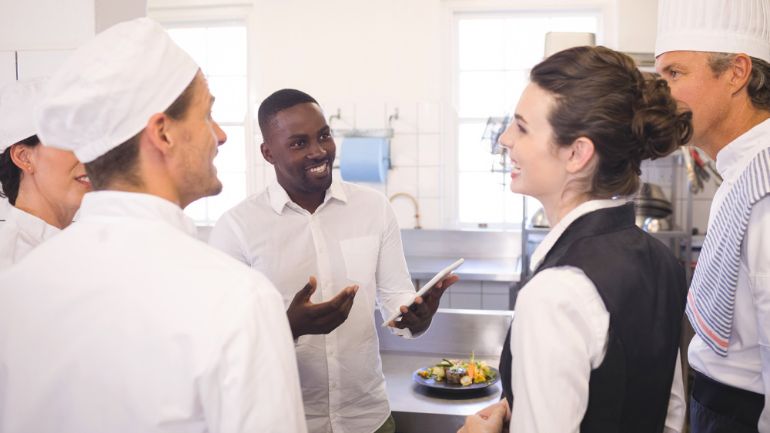
POS performance reports can show you how individual staff members are doing by measuring things like their average cover (how much their customers are spending) and time per table turn (how long their tables are seated for).
Use these performance reports to identify high performers and reward them, helping you retain those star employees longer. You can also see when and where staff are underperforming, so you’ll know when to ask your managers to provide more coaching or implement a buddy system, to help guide those who are struggling.
29. Schedule staff
Create schedules based on target labor ratios, employee skill levels, and historical data.
With a scheduling integration like 7shifts, your restaurant POS becomes a complete resource you can use to schedule staff easily. Enter employee information like average table turnover, special skills, and past performance, then pull up that data later when you’re making scheduling decisions. If Thursday night will draw a crowd for a special sporting event, your POS can find the servers best qualified to deal with a packed venue.
30. Seamless integration with accounting software
Avoid manually re-entering data into your accounting software, with integrations that export data automatically.
A restaurant POS can connect to accounting software like Quickbooks, Sage, and Xero, exporting the latest sales data, labor reports, inventory costs, and more without any need for duplicate entries. Whether you need this data for your P&L, tax reporting, or investment proposals, you have everything all in one spot – accurate, up-to-date, and ready for your accountant or bookkeeper.
31. Measure marketing campaigns
A restaurant POS lets you input and track promo codes, so you know how many customers were driven to your venue through a corresponding marketing campaign.
Say you’re looking at the number of ice cream sales associated with the SUMMERBOGO promo code. That number tells you how many customers responded to that specific campaign. You can use this information to determine if it was worth what you spent printing and distributing flyers around the neighborhood.
Or, compare last year’s data to see if the email campaign saw a better return on investment (ROI). Make decisions for future campaigns based on what you know will work.
32. Calculate tip pool
Manage tip pool contributions and distributions to make sure everyone’s getting their fair share.
If your venue organizes tip sharing or a tip pool – for just front of house, or front and back of house, depending on regulations in your area – you can set up a restaurant POS to automatically calculate the contribution amount when servers cash out or clock out.
Managers and venue owners can then use tip pool data in the POS to distribute the funds among the team.
33. Backup your data on the cloud
Protect your restaurant data from system crashes.
Sometimes, no matter what we do to prevent it, technology fails us. With a modern POS, if something happens to your hardware – equipment is stolen by a former employee or destroyed in a small kitchen fire that also took the chef’s eyebrows – all is not lost. Restaurant POS systems can automatically backup your data safely on the cloud, meaning you have it with or without working hardware.
Unlike retail POS systems, a restaurant POS is tailored to the needs of venues like yours, ensuring you get all the benefits listed in this article. Your POS can then become a central hub of your venue – a way to connect everything that’s happening back to the real heart of the operation: you.

Compare the top restaurant POS systems on features, pricing, payments, and more.
